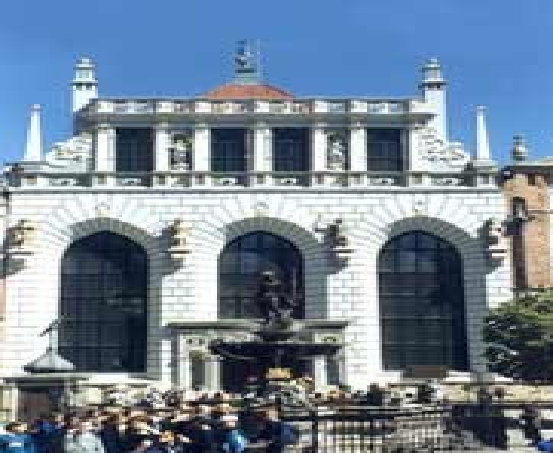Title of Product:
Artus Court as an example of the XVI century art
Country:
 Poland
Poland
Century: 1500 - The 16th Century
Topic: Artus Court as an example of the XVI century art
Image of the product:

Name of Author(s): Net periodic: “gdansk.turystyka”
Name of Producer: Net periodic: “gdansk.turystyka”
Language/s of Product: Polish
Target Group: General audience
Overall Evaluation: excellent
Availability of community:
Newsgroup
Objectives & Structure:
Aspects to consider:
- The Website presents a panorama of such courts, their architectural and artistic main plots
- Students can observe and systemize the values referred to the researched place and look for some comparisons within the art and the life in town- domains
- City courts, artistic and architectural decorative manner of the related kind, their attributive and inter crossing assumptions
- Possibility of creating a vivid lexicon referring to the civic architecture and decorations’ domain
Description of contents:
For many years that place was one of the most magnificent objects of sort in the Northern Europe. The Artus Courts were appearing in big numbers all over Europe, especially in the hanzeatic cities, as places of meetings of patricians, tradesmen, craftsmen, the pattern being the legendary Round Table of the King Arthur's knights. The Artus Court in Gdansk was an important centre of the social and trade- referred life, probably the most democratic place in that city. There appeared in there Castellans, Voivodship Governors, persons aspiring to the Polish Crown.
After the fire of the buiding erected in XIV century, there appeared the present shape of the building. The facade of the building was rebuilt by Abraham van den Blocke of Flemish origin. The portal is adorned by the medallions with the kings' portraits in a habitual- glorifying manner. The representative inside of the Court possesses an enormous, 12 metres high adorned with a tiled stove- the tiles were painted by the master Jost. The portraits were set on and they represented the eminent European governors of that time, their crests, and the personifications of the virtues and planets, as well.
At the present time, the Artus Court in Gdansk belongs to the Museum of Historic Town of Gdansk.
Evaluation and Comments:
Overall Evaluation: excellent
Clarity of structure, logical sequence of contents: excellent
Usability / easiness of navigation: excellent
The website is interesting / stimulating: excellent
Educational and learning value: excellent
Quality and relevancy of content: excellent
Compatibility of the content with the target group: excellent
Suitability and quality of graphic interface: excellent
Degree and quality of interaction: excellent
Exploitation of the electronic potential: excellent
Availability and quality of simulation exercises: excellent
Quality of the evaluation tools: excellent
Possibility of printing/saving material or tests: excellent
Description of how the website can be used with the students::
- The website initiates the concept that could be further developed in a collective, moderating sequences
Comments::
- The decorative objects can stand as the marking points of the cultural notion of the epoch, passing further to other civic domains, etc.
Evaluation Date: 01.09.2008.
Name of teacher: Antoni Woźniak
Name of School: LO number 3
Country: Poland
Subjects Taught: Fine Arts
Comments about this product

 Poland
Poland